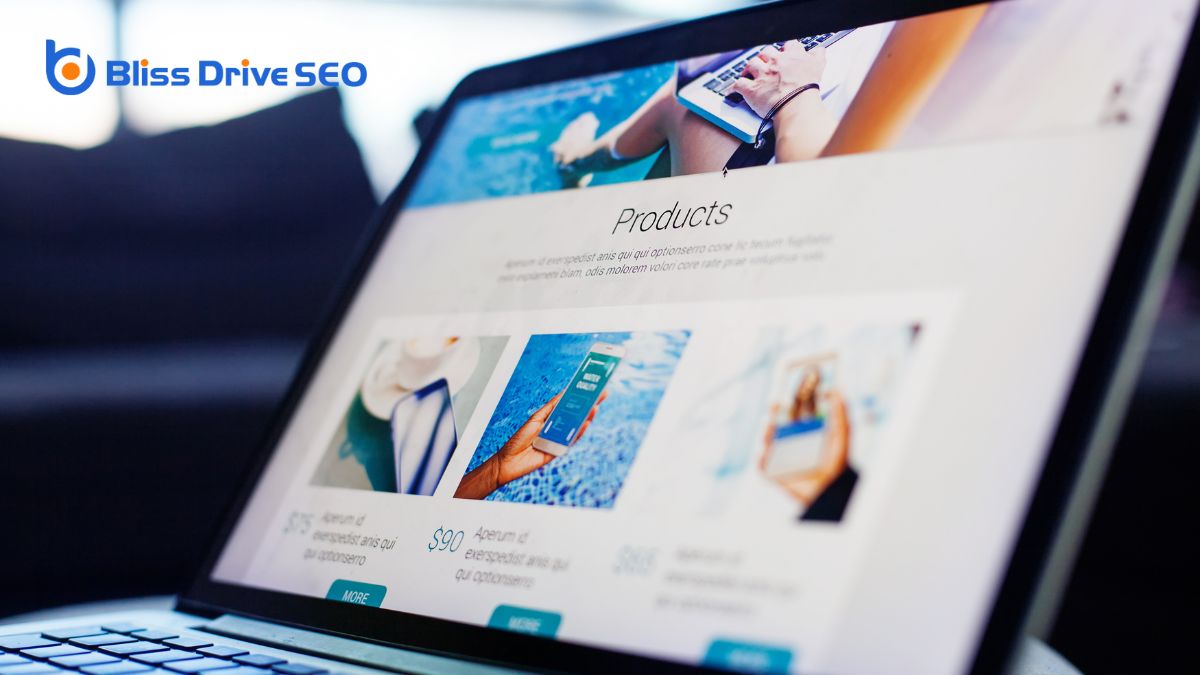Learn More About Us

Mastering on-page SEOOptimization techniques performed directly on the website, including content and HTML source code. is essential for your small business to stand out in search results and attract organic trafficVisitors who come to a website through unpaid search engine results.. Start with thorough keyword researchThe process of finding and analyzing search terms that people enter into search engines. to target relevant long-tail keywordsLonger, more specific keyword phrases that are less competitive and often more targeted.. Optimize your title tags and meta descriptions by including these keywordsWords or phrases that users type into search engines to find information. for better visibility. Use concise and neat URLs for improved performance. Structure your content with header tags and maintain high-quality, informative, and current content. Make sure your site is mobile-friendly and loads quickly. Implementing these steps will greatly enhance your online presence, and by continuing, you'll discover even more strategies to excel in on-page SEO.
Keyword research is the foundation of any successful on-page SEO strategy. For small businesses, focusing on the right keywords can make a significant difference in search engine visibility. Start by using tools like Semrush and Keyword Planner to identify high-traffic keywords relevant to your nicheA specific segment of the market targeted by affiliates to promote products or services.. These tools will help you analyze search volume, competition, and keyword difficulty, giving you a strong basis for your keyword strategy.
Next, target long-tail keywords that align with user search intentThe purpose behind a user’s search query.. Long-tail keywords are more specific and often less competitive, making it easier for your business to rank higher on Google. By understanding what your potential customers are searching for, you can tailor your content to meet their needs, enhancing your SEO results.
It's essential to regularly update and refine your keyword strategy based on performance data and industry trends. SEO isn't a set-it-and-forget-it task; it requires ongoing attention and adjustments. Keep an eye on which keywords are driving traffic and conversions, and adjust your strategy accordingly.

Once you've identified the right keywords, the next step is to optimize your title tags. Title tags are vital for on-page SEO and can greatly impact your search rankings. Aim for 50-60 characters to ensure your title tags display correctly in search results. Start with your target keywords to maximize SEO impact. For small businesses, this can make a significant difference in visibility.
Craft compelling and unique title tags to enhance click-through rates. Avoid keyword stuffingOverloading a page with keywords to manipulate search engine rankings.; it's important that your title tags accurately reflect your page content. Users and search engines alike favor clarity and relevance.
Incorporate modifiers like "best," "guide," or "2022" to capture user attention. These small adjustments can make your titles more appealing and informative.
When it comes to on-page SEO, using brief URLs can significantly improve your website's performance. Short URLs, ideally less than 50-60 characters, are easier for users to read and remember, making them inherently user-friendly. Google has even suggested that shorter URLs might offerThe specific product or service being promoted by affiliates. a slight ranking advantage, providing you with a boost in SEO performance. This is because concise URLs help search engines comprehend your page's content more efficiently.
Moreover, short URLs are more shareable on social media platforms. A clear, easy-to-understand URL structure encourages users to click and engage, enhancing your chances of driving traffic from social media. Consider this: would you prefer to click on a link that appears neat and organized or one that's crowded with unnecessary words and parameters? The latter could discourage potential visitors.
Maintaining a tidy structure in your URLs not only assists in user experience but also enhances your search visibility. Search engines prefer URLs that are simple and easy to understand. By avoiding unnecessary words or parameters, you guarantee that your URLs are optimized and prepared to perform well in search rankings.
While short URLs contribute to a cleaner and more user-friendly website structure, another vital aspect of on-page SEO is crafting effective meta descriptions. Meta descriptions are HTML attributes that provide a brief summary of your web page's content and are displayed in search results. For small businesses, optimizing these snippets is necessary to stand out in the crowded digital landscape.
Your meta descriptions should be concise, ideally around 150-160 characters, and include your main keyword. This not only improves visibility but also enhances click-through rates. A well-crafted meta descriptionA brief summary of a web page’s content, shown in the SERP. can entice users to click on your link by highlighting key information and benefits, turning casual browsers into potential customers.
Search engines often use these descriptions as snippets in search results, so it's essential to make them compelling and relevant. Unique and engaging meta descriptions can notably improve your website's relevance, attracting more organic traffic.

Header tags, like H1, H2, and H3, are essential tools that give structure and hierarchy to your content. They're important for on-page SEO because they help search engines understand your content's relevance. By including target keywords in your header tags, you tell search engines what your page is about and enhance your chances of ranking higher in search results.
Start with an H1 tagThe main heading tag in HTML, important for SEO and indicating the primary topic of a page. for your main title. This should include your primary target keyword and clearly indicate the topic of your page. Think of it as the headline of a newspaper article—concise and compelling.
Next, use H2 tags for subheadings that break your content into sections. These should also include relevant keywords to further indicate the content structure to search engines.
H3 tags can be used for subsections within those H2 sections, offering more detailed breakdowns.
Properly optimized header tags enhance user experience by making your content easier to read and navigate. When users can quickly find the information they need, they're more likely to stay on your site. A well-thought-out optimization strategy involving header tags can notably improve both your search engine rankings and user engagementThe level of interaction and involvement users have with social media content..
After structuring your content with optimized header tags, the next step involves internal linkingLinks that connect different pages on the same website. to further enhance your site's SEO. Internal linking is about strategically linking pages within your website to improve navigation and spread link authority. It helps distribute link equity throughout your site, boosting the visibility and ranking of important pages.
Here are four essential tips for effective internal linking:
Image optimization is necessary for enhancing your website's performance and user experience. By reducing image file sizes without compromising quality, you can achieve faster page load times, which keeps visitors engaged and reduces bounce rates. Tools like TinyPNG or ImageOptim can help you compress images significantly, boosting your website's speed.
To further improve your SEO, pay attention to image filenames and alt textDescriptions added to images to help search engines understand the content of images.. Using descriptive, keyword-rich filenames helps search engines understand what your images are about. For instance, instead of "IMG1234.jpg," use "blue-widget-product.jpg." Similarly, alt text provides a textual description of your images, aiding visually impaired users and letting search engines index your images more effectively. Including relevant keywords in your alt text can enhance your visibility in image search results.
Responsive images are vital for mobile user experience and SEO rankings. They automatically adjust to fit different screen sizes, ensuring your site looks great on all devices. This adaptability not only improves user experience but also signals to search engines that your site is mobile-friendly.
Incorporating these image optimization techniques will help you achieve better SEO results and a more engaging website.
When it comes to content quality, focus on creating high-quality, keyword-rich content that meets your audience's needs. Google values well-written, relevant information, so guarantee your content is engaging and answers user queries. Avoid duplicate contentContent that appears on more than one web page, which can negatively impact SEO. and keep your pages updated to maintain their relevance and authority.
Crafting high-quality content is the cornerstone of effective on-page SEO, playing a pivotal role in both engaging your audience and boosting your search engine rankings. Creating content that's well-researched, informative, and unique will establish your authority and credibility in your industry. Your content should answer users' questions and provide valuable insights, thereby driving organic traffic to your website.
To maximize the benefits of high-quality content, consider the following strategies:
Mastering keyword-rich content strategies is crucial for driving organic traffic and improving your website's search engine rankings. To start, incorporate your target keyword naturally within high-quality, valuable content. Don't force it; instead, make sure that it seamlessly fits into the context to enhance readability and SEO performance.
Leveraging long-tail keywords and question keywords can greatly boost your content depth. These specific phrases not only help you reach a broader audience but also align closely with user search intent.
For instance, if users commonly ask, "How to enhance SEO performance?", incorporating such question keywords can directly address their needs.
Using synonyms is another effective way to enrich your content without resorting to keyword stuffing. Variety in language keeps your content engaging while still targeting relevant search terms.
Always focus on creating informative content that offers real value to your audience. Avoid the pitfall of keyword stuffing, as it can diminish content quality and harm your rankings. Instead, aim for a balance where keywords naturally enhance the narrative.

Boosting your website's mobile-friendliness isn't just a good idea; it's necessary for small businesses aiming for online success. With over 60% of Google searches happening on mobile devices, optimizing your site for mobile users is crucial. Google prioritizes mobile-friendly websites in search rankings, so focusing on mobile optimizationDesigning and formatting web content to ensure it performs well on mobile devices. can greatly enhance your visibility.
To succeed, consider these four key strategies:
When it comes to enhancing your website's SEO, page speedThe time it takes for a webpage to load, affecting user experience and conversion rates. is one of the most essential elements to take into account. A fast load time not only improves your SEO performance but also enhances the user experience. Google recommends a load time of under 2 seconds for best results. A delay of just one second can lead to a 7% loss in conversions, so optimizing for speed is crucial.
Mobile page speed is vital, too. If a page takes longer than 3 seconds to load on a mobile device, 53% of visitors are likely to abandon it. To boost your page speed, start by using Google's PageSpeed Insights tool. This tool will provide you with valuable insights and specific areas needing improvement.
Implement strategies like image optimization, which reduces the file sizes without compromising quality. Caching can also make a significant difference by storing frequently accessed data, reducing load times. Minimizing HTTP requests by combining files can further enhance speed.
You need to focus on optimizing title tags, meta descriptions, headings, content, URLs, and alt attributes. Guarantee proper keyword placement and character limits. Don't forget internal linking, XML sitemapA file that lists a website’s important pages to ensure search engines can find and crawl them. submission, page speed, and multimedia integration.
For your small business website, focus on keyword optimization in titles, headings, and URLs. Enhance internal linking and guarantee technical health. Regularly update content and use multimedia elements for better engagement and improved SEO rankings.
You're asking about on-page SEO best practices. Focus on optimizing title tags, meta descriptions, and headings with keywords. Use internal links, schema markupCode added to a website to help search engines understand the content., and clean URLs. Always create high-quality, original content to boost search visibility.
You should focus on keyword placement, unique content, and optimized URLs. Guarantee internal links and anchor text are effective. Don't forget technical aspects like XML Sitemaps, robots.txtA file that tells search engine crawlers which pages or files they can or cannot request from your s..., and page speed for overall better SEO performance.
By following this essential on-page SEO checklist, you'll enhance your small business's online presence and attract more customers. Focus on keyword research, optimize your title tags, and use short URLs. Don't overlook meta descriptions and header tags. Make sure your images are optimized, your content is high-quality, and your site is mobile-friendly. In conclusion, improve your page speed. Stick to these steps, and you'll see noticeable enhancements in your search engine rankings.
